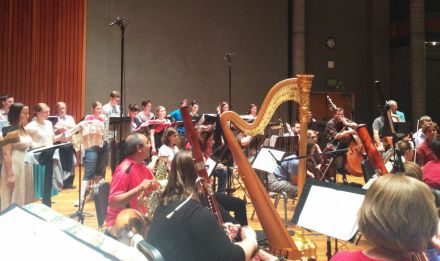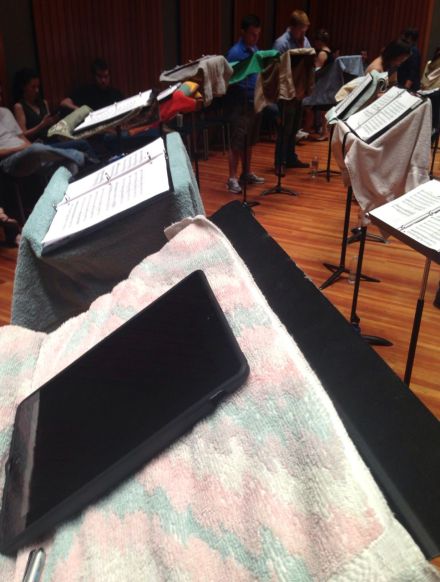While I’m on a gig, sometimes my dinner company looks like this:

Lovely singer friends, at the ever-tasty El Charro
And other times, more like this:
Being a singer is the best and worst thing about being a singer. Making music entirely with your own body is an amazing thing. Minus the worries about cold bugs and Airplane Voice from dehydration, a voice is certainly an easy instrument to travel with (much less stressful than a cello or guitar; check out this blog posting on Alban Gerhardt’s recent experience, or Sons of Maxwell’s humorous music video for the instrumentalist’s take on traveling).
But, being a singer is also, quite frankly, a pain in the butt. There’s the aforementioned constant worry about sickness that turns you into a ridiculous germaphobe. And there’s the fact that the voice is produced by a delicate collection of tiny muscles, cartilages and tissues which must be treated nicely.
Part of the difficulty of being good to our voices is that we don’t only use our voices for singing; we also use them throughout the day for communicating by talking. Marathon runners don’t finish a training session and then jog around for the rest of the day. But that’s exactly what singers have to do when they rehearse or record for 6 hours a day, and then spend their breaks socializing over meals or calling friends or family back home.
So, sometimes we do “singery” things like being unsocial and eating alone quietly. We try not to make phone calls on a heavy singing day. Email and online typed chats are a godsend for staying in touch without losing your voice, but it’s weird to tell your best friend you’re free to talk but you’re going to have to gchat instead. After concerts, we do our best to keep our audience conversations short and low-volume, and we have to avoid loud bars and restaurants.
It’s hard for me. I’m social and one of my favorite things about gigs away from home is getting catch up with friends from around the country. But sometimes, ya just gotta’ eat your bag dinner, alone, in the auditorium lobby…















